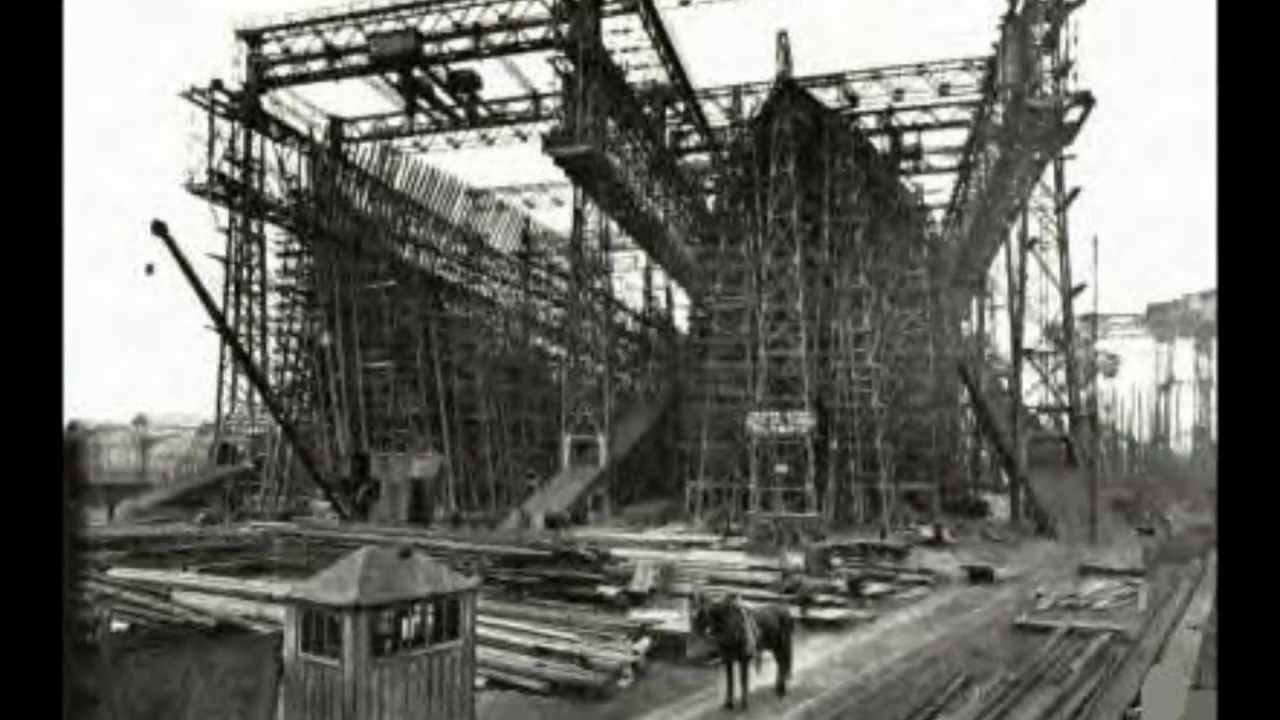The sinking of the Titanic was one of the great tragedies of the 20th century. The Titanic plunged to the bottom of the North Atlantic Ocean after hitting an iceberg, claiming the lives of 1,503 passengers. The April 1, 1912 disaster happened in the wee hours of the morning. Only 700 on board survived, thanks to the rescue efforts of the RMS Carpathia and its crew. Crowds rushed down to the docks at New York’s Pier 54 to greet the survivors. The press was there to document it all. Now we have more information about the Titanic than ever before. These powerful images give the story a new perspective.
Titanic During Construction, Shipyards

Although the Titanic was said to be the technological wonder of its time, experts have also theorized that the Titanic had design flaws that made it more susceptible to disaster. Even today, curiosity about the scale and grandeur of the ship has so captured the imaginations of the public that a Chinese resort announced it was building a full-sized Titanic replica using the original specs. The Unsinkable Titanic theme park measures nearly 883 feet long by 93 feet wide.
Titanic Launches at Belfast, on May 31, 1911

The Titanic was constructed in Belfast, Ireland, on the site of Hartland and Wolff shipyard. Belfast is now the home of the largest Titanic attraction in the world, a 130,000 sq ft marine museum – Belfast Titanic – which opened in 2012.
Titanic’s Iconic Nameplate

The name Titanic means “gigantic, and was taken from Greek mythology, as the Titans were a group of powerful gods. The ship was the second of three Olympic-class ocean liners to be built at the time. The first, the Olympic, sailed from 1911 to 1935, while the third ship, the Britannic, sank in 1916.
Nameplate Conspiracy

Under water images of the Titanic taken in 2006, showed two letters of the Titanic nameplate had fallen off, revealing an M and P engraved under them. A filmmaker believes this revealed a shocking conspiracy: the Olympic and the Titanic were switched and the Olympic was sunk deliberately in order to save the White Star shipping line from financial catastrophe. The nearly-identical Olympic had suffered an injury on the starboard side, in the same location where the Titanic hit an iceberg just six months later.
Sea Trials

Prior to launch, the Titanic went on sea trials on the Irish Sea to test her handling characteristics. The first day of trials was April 2, 1912 and after 12 hours of going through her paces, the Titanic was pronounced seaworthy.
The RMS Olympic

The RMS Olympic, the Titanic’s sister ship, docked in New York on the same day the Titanic left Southampton, England. The Olympic was in service for 24 years, including a stint carrying troops during World War I. Conspiracy theorists believe the British government covered up a scandal involving the Olympic being switched with the Titanic because it needed the ship for troop movements.
Iceberg

This is the iceberg that was “charged” with sinking the Titanic. Chief Steward of the ocean liner Prinz Adalbert took this photo on April 15, 1912, a few miles south of the place where the Titanic sank.
Remains on the Last Boat

A month after the ship sank, the final lifeboat from the Titanic was found 200 miles away. It was a gruesome sight for rescuers who discovered the lifeboat with the remains of its passengers still inside — one of the recovered bodies still wore a dinner jacket. This account, written by a passenger on the RMS Oceanic who witnessed the recovery, tells the tale.
Wireless Operator at Wanamaker’s Department Store

David Sarnoff, manager of the Marconi wireless station at Wanamaker’s Department Store, helped save lives on the Titanic by transmitting distress signals. After three days at his Wanamaker’s post, Sarnoff traveled to Marconi’s Sea Gate station on Coney Island, where he contacted the steamship Carpathia for information on the passengers who had been rescued. He then relayed the news to the survivors’ families.
Tugboat

The Carpathia crew spotted the Titanic survivors floating in tugboats, and brought them aboard on April 15. After the Carpathia pulled back into port on April 18, it was surrounded by more than 50 tugboats filled with journalists, all vying to get an eyewitness account of the Titanic sinking.
Survivors

Pictured here are some of the survivors on board the Carpathia. Although the Carpathia was part of a rival company, she bravely dodged ice fields and diverted all steam power to the engines in order to reach the Titanic in two hours. The Carpathia saved 705 people, quickly responding to the distress signals and broadcasting news of the sinking to those on land.
Retrieving the Bodies

White Star Line asked the CS Mackay-Bennett, a cable repair ship based in Halifax, Nova Scotia, to retrieve bodies from the Titanic. The ship was one of four used to collect the dead, and had aboard a clergyman, an embalmer, ice, coffins and embalming fluid. Some bodies were buried at sea, while others were transported to Halifax. Of the Halifax bodies, 42 unidentified people are buried with simple grave markers with just the date of the Titanic disaster.
Titanic’s Orphans

They were the only children rescued from the Titanic without a parent or guardian. After their father and mother split up, the father booked himself and the boys passage on the Titanic without informing his ex-wife. The father died after placing his sons on the last lifeboat launched from the Titanic. The newspapers of the time dubbed them the “The Titanic Orphans.”






